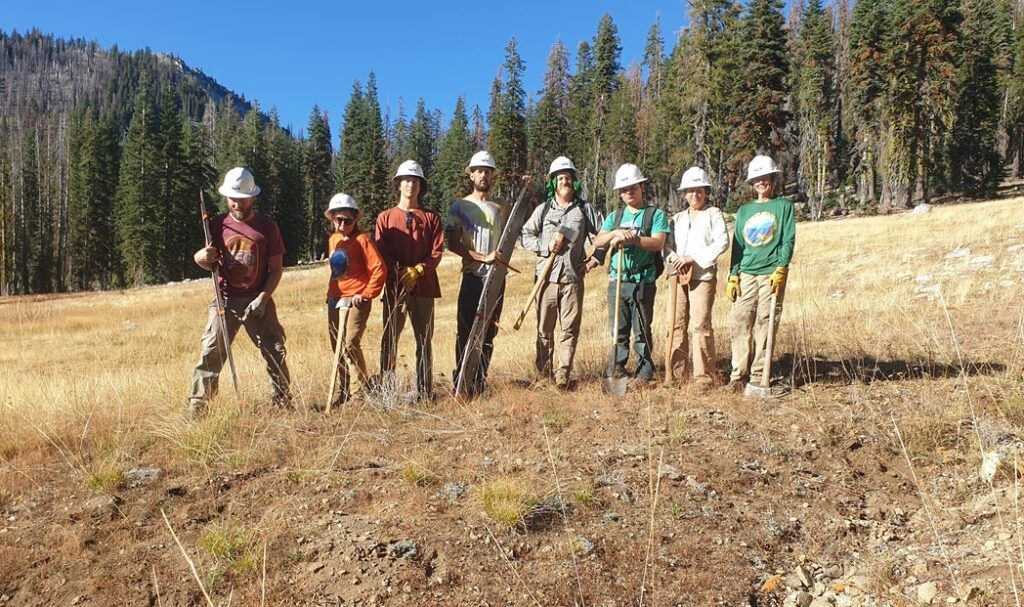
The Ascend Wilderness Experience – Bigfoot Trail Stewardship project is a collaboration between the Bigfoot Trail Alliance, Ascend Wilderness Experience, and the United States Forest Service; Shasta-Trinity National Forest. It aimed to restore a trail network that had suffered due to fire. After years of disrepair, the trails required retreading, brush removal, and clearing downed trees to maintain their integrity. With essential support from the Backcountry Horsemen and their mules, we established a base camp at Trail Gulch Lake–enabling us to undertake this ambitious project.
A team comes together
A dedicated team of six volunteers, along with two Ascend guides and a USFS employee, focused on high-priority trails around the Trail Gulch Lake area. Our primary target was the Fish Lake trail, where we worked diligently to remove logs and retread sections that stock had bypassed. Much of our effort was directed toward the Fish Lake drainage, where the challenges were significant but manageable.

Next, we shifted our attention to Rush Creek Lake. Although this area had been severely burned, the number of downed trees was less daunting than we had anticipated. We encountered two particularly troublesome trees: one was infested with yellow jackets, making it impossible to tackle, while the other had a complicated top bind that required creative problem-solving. Ultimately, we removed the second tree and completed some retreading to correct trail alterations made by livestock.
Following our work at Rush Creek Lake, we ventured into the South Fork Coffee Creek drainage, an area that had seen no maintenance for years due to fire. This trail required extensive bushwhacking and retreading, including cairn building to help protect the fragile meadows from erosion.
After completing our work in the South Fork Coffee Creek area, we moved onto the Long Gulch Lake Trail. Thankfully, most of this trail remained in good condition, with only sporadic burn impacts affecting the ridge line between the two lakes. We cleared larger trees and removed heavy branches in the burned sections to ensure safe passage.
On our final workday, we returned to the upper portion of the South Fork Coffee Creek trail to clear logs up to the junction with the Steavale trail. This section needed significant brushing and retreading, but we ultimately stopped when the trail became indistinct due to a combination of burn, wind, and weather damage. In total, we were able to remove or relocate 49 downed logs, maintain nearly 15 miles of trail, and monitor another 16.5 miles of trail with around 330 volunteer hours.

The joys of working in the Wilderness
Throughout our trip, we experienced complete solitude, encountering no other hikers. The dark skies and stunning weather added to our wilderness experience, making our efforts all the more rewarding and meaningful.”
*Some of the conifer species that were spotted on this trip included Foxtail Pine, Ponderosa Pine, Lodgepole Pine, White Pine, Sugar Pine, White Fir, Douglas Fir, Red Fir, Cedar var., and Hemlock.
*Some of the noted animals sighted and or heard were Deer, Chipmunks, Cows, Owls, Bear, Foxes, a Beaver, Hawks, Band Tailed Pigeons, Greater White Fronted Goose, Woodpeckers, Gray Jays, Blue Jays, Frogs, Toads, and lots of Brook Trout.




Leave your thoughts...